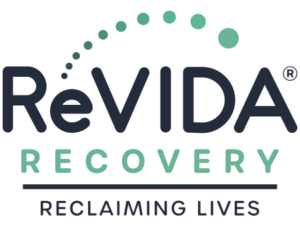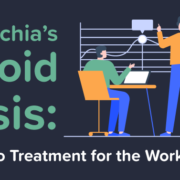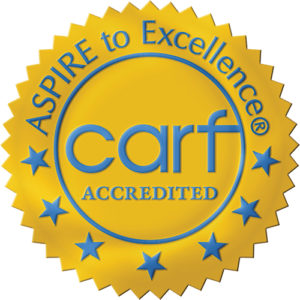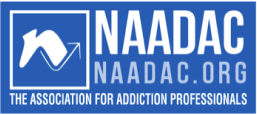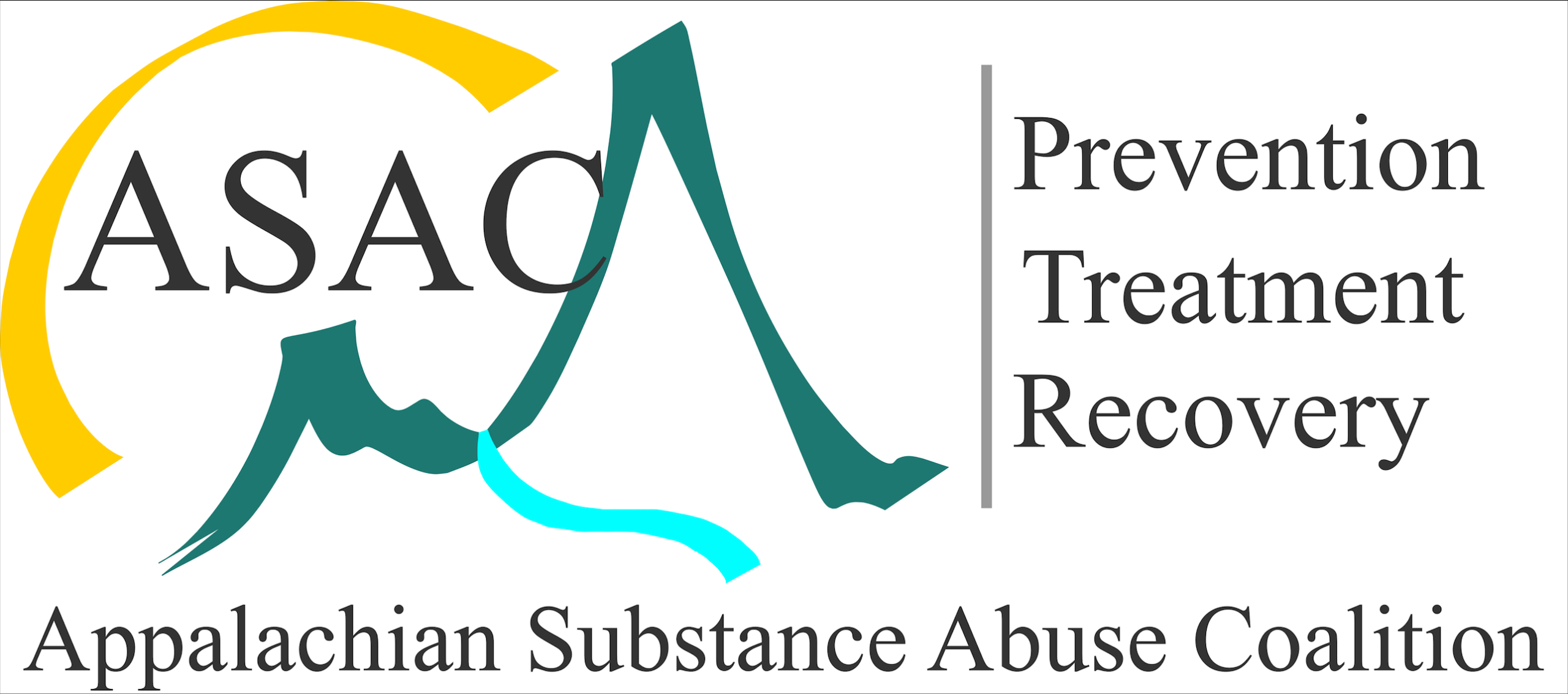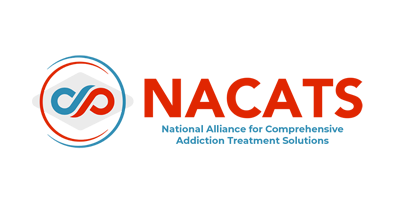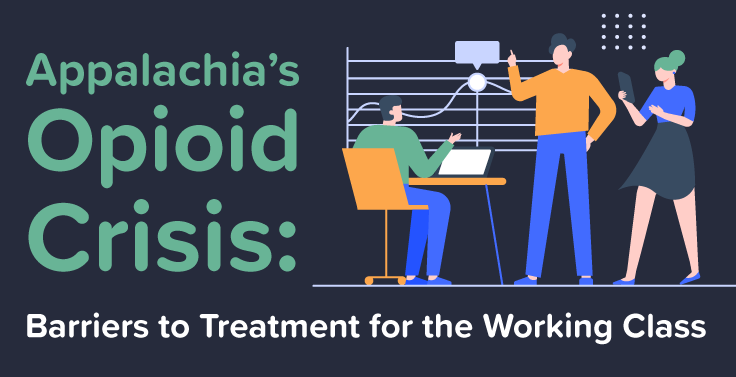
“Even though medicine long ago reached a consensus that addiction is a complex brain disorder with behavioral components, the public and even many in healthcare and the justice system continue to view it as a result of moral weakness and flawed character.” -Dr. Nora Volkow
Small towns are great. Everybody knows your name, it’s easy to trust people because you’ve known them for your whole life, and there’s always someone to watch your dog when you go out of town. Everybody knows everybody and there are no surprises. Things feel safe. Routine. Comfortable. Right?
For all of its charms and lovely idiosyncrasies, these towns aren’t without fault. Stigma grows in small towns like common bacteria, due to the speed at which word spreads. If you’re struggling in school, people know about it. If you’re dating someone new, people are going to talk about it. Family drama? It’s unlikely for that to fly under the radar. In a small town, your business isn’t your business – it’s everyone’s.
Appalachia, a cultural region in the Eastern United States, includes over 420 counties and is filled with these small towns. These tiny Blue Ridge Mountain communities have a massive history of excessive opioid consumption – and it isn’t getting much better. Why are almost six thousand people dying from opioid overdoses every year in this region?
While there are several factors influencing nationwide addiction rates, one thing is clear: these communities are being hit the hardest. Stigma, poverty, history of education, and availability of resources continue to act as barriers to treatment in Appalachia.
Table of Contents
Are Appalachian Values Perpetuating a Stigmatic Mindset?
To understand why stigma is so prevalent in these cities, it’s important to think about the attitudes perpetuated in Appalachian culture. Appalachian history goes back thousands of years and it’s laden with rich, strong values.
Those who chose to settle in the Blue Ridge Mountains were hard workers who fiercely fought to live off the land and create strong familial bonds. While many ethnic groups with a diversity of ideas and cultures settled here, (including Native Americans and Irish-Scots) their values all aligned; hard work and self-reliance were paramount. These are still the cornerstones of Appalachian culture today.
This commitment to self-reliance and independence contributes to the mindset of not needing or wanting help from anyone – even when it comes to mental health or addiction treatment. As productive and inspiring as these values are, they can induce the stigma that there’s something wrong with getting treated for something like addiction or dependence. A recent study in the International Journal of Drug Policy asked a group of Appalachian women what their thoughts were on medication-assisted treatment (MAT) for opioid use. Their answers were surprising.
Many of the women commented on the conservative environment in which they lived. They believed that complete abstinence (with no medical help) was the only way recovery was possible. People living in these areas also fear the judgment of those around them. Conservative culture doesn’t always leave room for self-compassion or mistakes. Because of this, people will often avoid getting help altogether, allowing their drug use to fester and become worse.
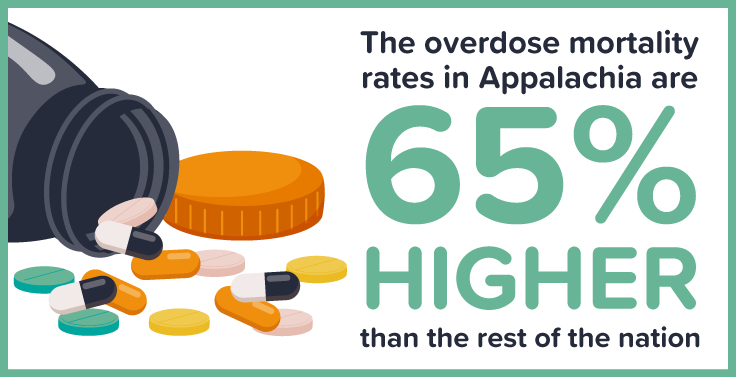
The Role Education Plays in the Opioid Crisis
Another thing that hasn’t changed much about Appalachian culture is the significant lack of education in many of their communities. Illiteracy contributes to a lack of job security and the absence of financial growth opportunities. With a poverty rate of over 15%, this region is home to some of the nation’s poorest counties.
The combined income of many families in this region is at or below $50,000, leaving little room for healthcare, a college education, or any kind of investment opportunities. This means that when someone is struggling with mental health or an opioid dependency issue, seeking help isn’t always an option. It also means that many individuals haven’t been educated about the efficacy of treatment.
This mindset that there’s something wrong with addiction treatment or that the only way to heal is to abstain (and to do it alone) is damaging. It’s also damaging to be unaware of how important treatment is or what happens when the idea of recovery is ignored or not properly understood. This is contributing to the overdose mortality rates in Appalachia, which are 65% higher than the rest of the nation.
The Stark Reality of Overdose Mortality Rates in the Appalachian States
The Appalachian region stretches across 13 states, and all these states have concerning overdose mortality rates. Let’s take a closer look:
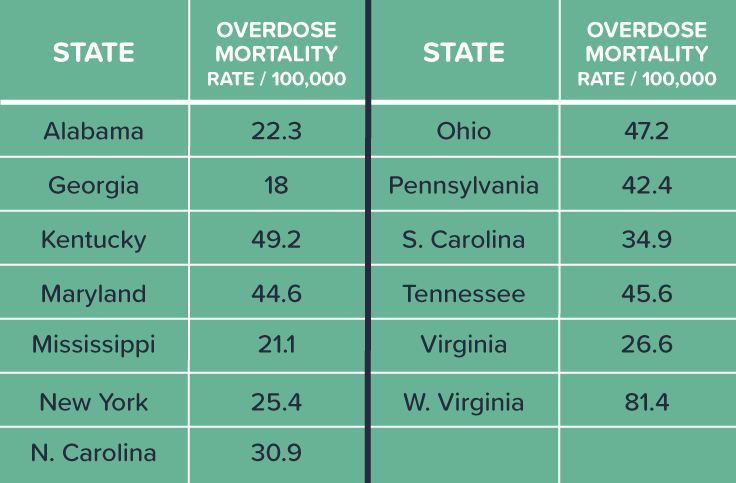
West Virginia has the highest drug overdose mortality rate in the nation, and its first responders are feeling overwhelmed by the sheer volume of deaths caused by opioids. Jan Rader, chief of the Huntington Fire Department in West Virginia, is frustrated by the barriers to addiction treatment.
When she first began working for the fire department ten years ago, it was rare to come across dead bodies caused by overdose. Now, Jan and her crew of first responders see thousands of deaths each year.
It has also become routine for first responders to swoop in with Naloxone, a drug that counteracts the effects of an opioid overdose, only to assist that same patient weeks later with the same problem.
Check out the video: A community overwhelmed by opioids
The Appalachian Healthcare System
Stigma isn’t just limited to individuals. When it’s ingrained into a culture, stigma seeps its way into local government, the education system, and the healthcare system.
Dr. Nora Volkow, the Director of the National Institute on Drug Abuse at the National Institute of Health, has this to say about stigma infiltrating health care systems: “Stigma on the part of healthcare providers who tacitly see a patient’s drug or alcohol problem as their own fault leads to substandard care or even to rejecting individuals seeking treatment.
People showing signs of acute intoxication or withdrawal symptoms are sometimes expelled from emergency rooms by staff fearful of their behavior or assuming they are only seeking drugs. People with addiction internalize this stigma, feeling shame and refusing to seek treatment as a result.”
Appalachian Coal Miners and Opioid Use Disorder: Why this Group of Workers Are Living with Opioid Use Disorder
The Appalachian working class is the group of people that’s arguably the most affected by treatment stigma. Over 24,000 Appalachian residents work in the coal mining industry, with 75% of those working underground. This is a steep decline from earlier in the decade. In 2012, there were over 57,000 coal miners in this area.
Lifelong disabilities are common in coal miners. Injuries and chronic pain are also common, which contribute to the vast number of opioid prescriptions filled each year. One in every ten coal miners has also been diagnosed with black lung, with thousands of families receiving federal black lung benefits each year.
Along with lifelong disabilities and the potential for black lung, coal miners can also experience things like falls, traumatic injuries, entrapment, electrocution, equipment misuse, and family separation – all events that can lead to the development of post-traumatic stress disorder (PTSD). They’re also usually working 12-hour shifts for weeks at a time, which can lead to emotional and physical burnout.
A research letter published in 2021 reports that 34% of sampled Appalachian coal miners experience symptoms consistent with a major depressive disorder, with 11% dealing with suicidal ideations and almost 40% living with significant anxiety.
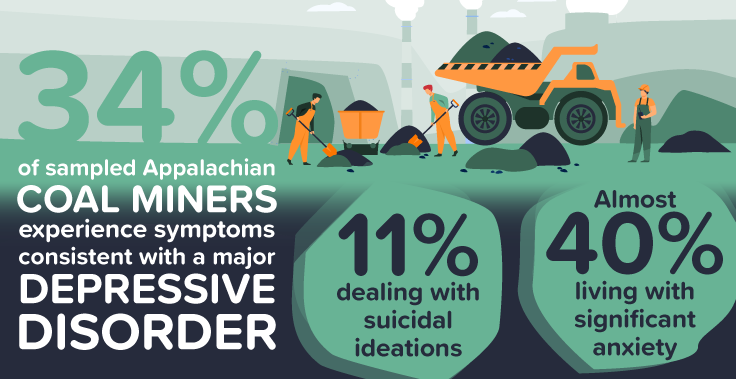
Risk Factors for Addiction in Coal Mining Populations
Addiction is complex. There’s no set cause or reason behind why some people form a dependence on opioids and others don’t. However, there are risk factors that can point to a potential problem. Two of those risk factors are a history of chronic pain and a history of mental health problems – both of these risk factors are present in the coal mining population.
The rates of opioid use disorder in coal miners are staggering. Drug use in the coal mining regions of Appalachia far exceeds drug use in non-coal mining rural areas. This indicates that people living in these regions are at an increased risk for developing substance use disorders. Drug and alcohol misuse is so common in this community that up to 11.8% of coal miners struggle with alcohol or substance use disorders. This group of people is desperately in need of treatment, but because of the stigma surrounding treatment, many are not seeking the help they need.
The Cause of Addiction Stigma Amongst Coal Miners
Mainstream, middle-class culture may be more aware of the science behind addiction due to collective interest and education, but many in Appalachia’s mining culture still operate under the belief that there’s something shameful about opioid dependency. Dr. Peter Grinspoon, an educator at Harvard Medical school, believes that this kind of stigma is a massive barrier to people getting the treatment they need. In a 2021 contribution to Harvard Health Publishing, he states:
“Stigma is defined as ‘a mark of disgrace associated with a certain quality, circumstance, or person.’ The poor regard with which so many people have viewed for so long those who have suffered from addiction, and the fact that we have criminalized drug usage in our increasingly unpopular war on drugs, have contributed to a ‘punish, don’t treat’ attitude. Fortunately, this destructive attitude has recently been evolving, as more people have come to understand that addiction is, at least in part, a brain disease, and that it isn’t a moral failing on the part of the individual. However, a great deal of stigma remains, and provides an extra barrier to people asking for the help they need, as they suffer from unnecessary guilt and shame. Many healthcare providers don’t want to deal with people suffering from addiction due to stigma. In short, stigma can lead to unnecessary suffering and more overdose deaths.”
Lack of education can often breed stigma like this. Eventually, if it becomes powerful enough, stigma can also infiltrate the healthcare system. This is what’s happening in rural mining towns. For example, clinicians in these areas have indicated that they’re less willing to provide treatment services because of the community’s stigma surrounding opioid use disorder. Even those who recognize their need for treatment are avoiding doctors.
Barriers to Treatment for Appalachia’s Working Class
Coal miners aren’t the only group at the center of Appalachia’s opioid epidemic, and stigma isn’t the only barrier to treatment. Some Appalachian cities still struggle with treatment access or affordable options. Hannah Cosner-Starr, a local restaurant owner in Asheville, North Carolina, has felt the opioid epidemic on a personal level. She recently lost one of her employees to substance use, and she believes it’s due in part to a lack of available (and well-known) resources.
“He was actively working to get better and it was heartbreaking. It’s hard to recommend treatment to people because there’s no ‘shopping list’ available. We don’t know what the state will pay or what our insurance will pay. A lot of people don’t seek treatment because they’re just not aware of anyone who’s actually willing to help,” she said.
When asked about how often she sees substance use in her area, Hannah spoke about the frustration of not being able to help: “It’s always been a perpetual issue here. We’ve lost employees all over the city due to opioids. We live in a very accepting and eclectic community, but regular everyday people are still feeling bad about admitting they need help… these are our friends and neighbors dealing with this, and it’s shaking us to our core.”
Additionally, Hannah and other residents in her region feel that stigma could be eliminated with easier access to treatment options:
“There’s a lot of secrecy involved in seeking treatment here, and part of that is because of the lack of available resources. If we had more treatment options, the stigma wouldn’t be as bad… if you get addicted to something around here, you’re immediately outcast as someone who’s not an active participant in the community.
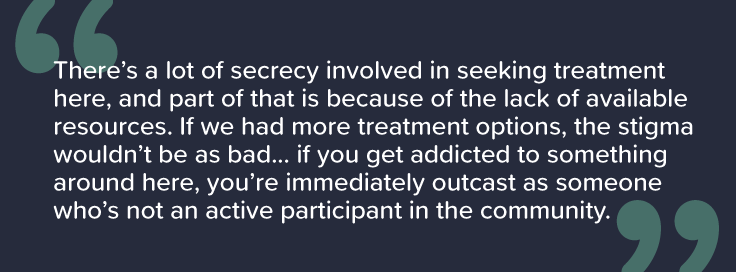
Spotlighting Appalachian Stigma Fighters
Education on addiction and treatment might be sparse in Appalachian communities, but there are organizations committed to the cause. Stigma’s greatest enemy is education. The more people are exposed to the realities of addiction treatment, the easier it will be for them to feel comfortable seeking it (or recommending it to their loved ones.) Here are some organizations in Appalachia dedicated to fighting stigma and promoting recovery:
Their mission: “To produce events that help connect and grow communities of recovery and healing in Appalachia, raising funds and awareness to combat opioid addiction through a wide array of projects and programs from youth prevention, healthy lifestyles, and wellness to recovery houses and recovery to work. Like Farm Aid does to raise awareness and funds for America’s small, sustainable family farms, we want to bring together folks to raise funds and awareness to celebrate recovery through our main event Healing Appalachia each September, and work year-round on more projects fostering communities of recovery.”
What they can do for you:
If you’re currently running a recovery program, Healing Appalachia can help you grow your program and reach more patients here.
How you can help:
Inquire about volunteering here
Their mission: To help individuals in recovery access the support services and training they need to maintain recovery and successfully obtain sustainable employment.
What they can do for you:
They can invest in your recovery business or organization. “Since April 2021, ARC has invested $28.1 million in 84 projects that address Appalachia’s substance use disorder crisis in 289 counties. Together, these projects are projected to improve more than 1,100 businesses and provide opportunities for nearly 6,500 students and workers in creating or expanding recovery ecosystems leading to workforce entry or reentry throughout the region. Learn about their grant opportunities here.”
How you can help:
To inquire about volunteer opportunities, email ARC at: SUD@arc.gov.
Donate to one of their partners
Their mission: To share content from Appalachia’s diverse communities with regional, national, and international media organizations. “We believe the story of Appalachia reflects the story of our country. We’re here to amplify the region’s diverse voices, celebrate our successes, investigate our failures and empower our communities.”
What they can do about the stigma associated with addiction treatment:
“For more than a year, a team of folks from 100 Days in Appalachia and the Opioid Policy Institute have been working on ways to address unintentional stigma that often appears in reporting on addiction. In September, as part of Recovery Month, we unveiled the first in our series of resources and training materials under Reporting on Addiction, available to professional and student journalists alike.
We work on multiple levels with individuals with substance use disorder. We’re also involved with justice settings, where it’s estimated that at least half of the people that are in jail or in prisons are there because of a problem with drugs, and in many instances, they are not given any access to treatment, and, again, they sometimes end up there because of stigmatizing. So we’re partnering with them to create models of care that actually take a different approach and show that it actually leads to better outcomes. There’s not one solution that’s going to address all of the issues of stigma, but we’re working on multiple levels.”
One of the best ways to fight addiction stigma is to talk about it. 100 Days in Appalachia works to educate the community about substance use disorders to eliminate stigma and promote recovery.
How you can help:
You can support local journalism by sharing their articles, watching their newsletter for volunteer opportunities, or donating.
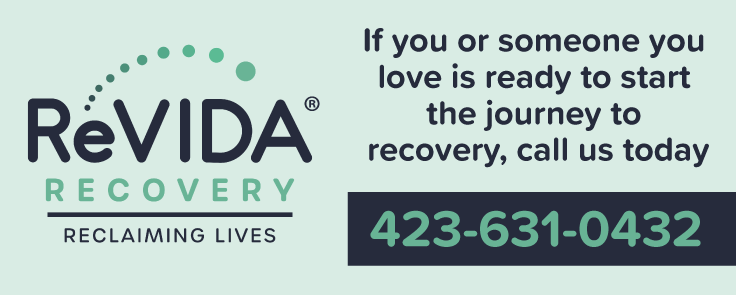
How ReVIDA® Recovery is Fighting the Stigma of Addiction Throughout Appalachia
At ReVIDA® Recovery, our comprehensive behavioral healthcare provides patients a renewed chance at living healthy lives by addressing the mental, physical, and environmental struggles of substance use disorder. We know that our region has a long way to go when it comes to destigmatizing addiction and recovery, and we proudly work to be a part of the solution. The journey toward healing can only take root when we destigmatize addiction disorders and ensure access to all resources necessary for recovery. You can read more about our approach to eliminating stigma in our article in the Greeneville Sun.
ReVIDA® Recovery works to help people reclaim their lives from addiction through specialized outpatient treatment, medication-assisted treatment, counseling, and group therapy. We are developing a premier network of outpatient recovery centers that deliver clinical excellence and industry-leading outcomes. If you or someone you love is ready to start the journey to recovery, call us today at 423-631-0432.
